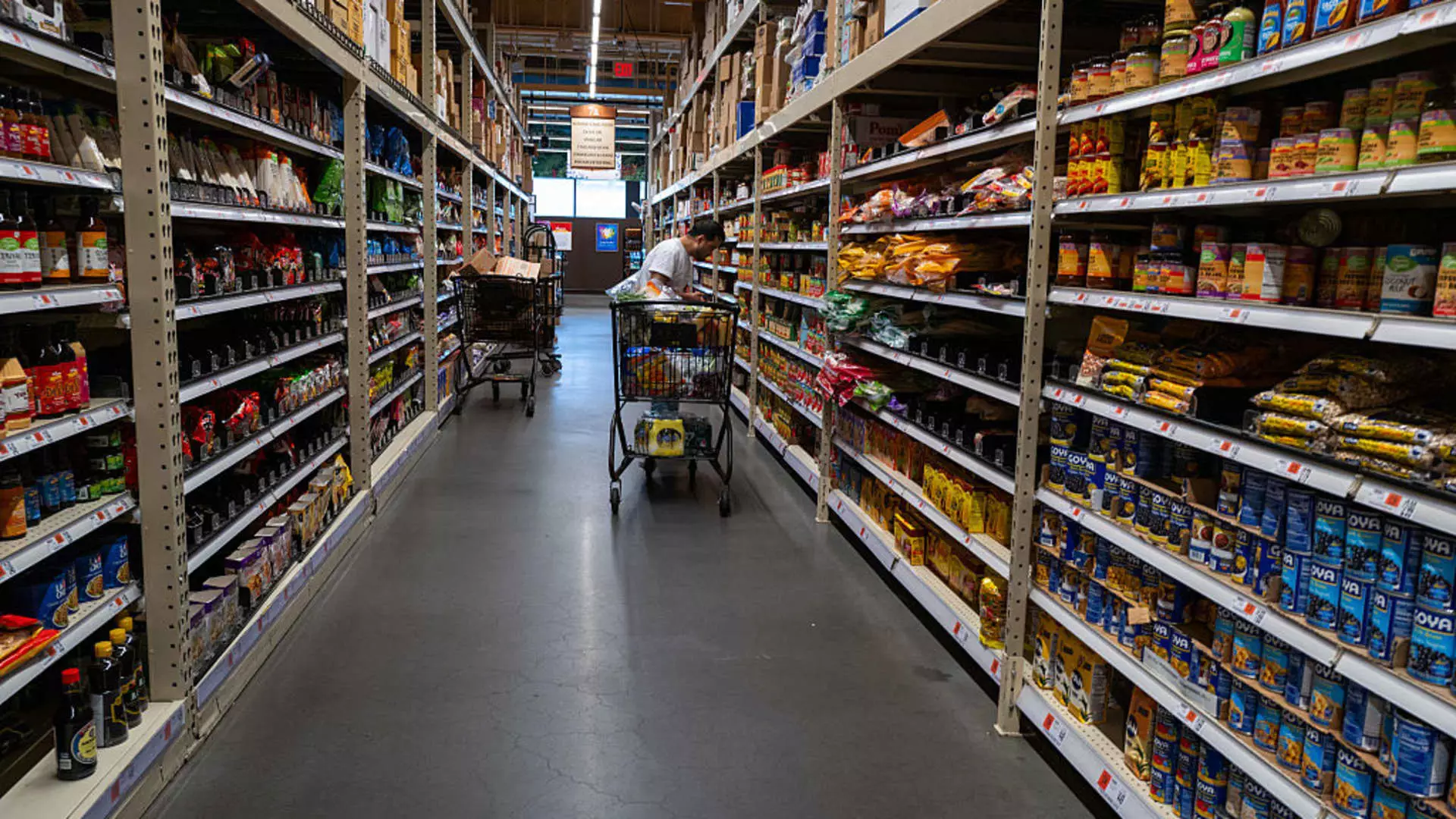Recent reports illustrate a sobering reality for the U.S. economy: inflation is not only lingering, but its pulse is barely detectable. The latest figures from the Commerce Department reveal that the personal consumption expenditures price index—a barometer that the Federal Reserve closely monitors—shifted a meager 0.1% for the month of April. In a world where consumers are increasingly anxious about their financial futures, these numbers signify more than just stagnant growth; they suggest an economy that is unwilling, or perhaps unable, to progress toward healthier inflation rates.
A closer look reveals a troubling core reading that aligns perfectly with experts’ predictions but fails to inspire confidence. Excluding volatile elements like food and energy, the core inflation figure stands at 2.5%, which, while still within the Fed’s target range, hints at an economy teetering on the brink of complacency. While many analysts were bracing for a less-than-stellar performance in consumer spending, the reality—a slight increase of only 0.2%—indicates a disengaged populace faltering in the face of rising living expenses amidst stagnant wages.
The Cautionary Consumer
Adding urgency to this economic tableau is the surprising leap in the personal savings rate, which surged to 4.9%—an increase that hasn’t been seen in nearly a year. This shift marks a significant deviation from the era of impulsive consumer spending that defined the last decade. Americans, like a cautious flock sensing storms on the horizon, are becoming wary of their financial footing and opting to save rather than spend.
The disturbing paradox is that while personal income has risen by a healthy 0.8%, reflecting a robust job market, the discontent around inflation and consumer pricing has prompted individuals to rethink their spending habits. This increased caution could indicate a serious disconnect between economic indicators and consumer sentiment. In such times, a persistent psychological malaise may inevitably lead to reduced economic activity, spiraling wages further downward.
Political Posturing and Economic Reality
At the heart of this inflationary dilemma lies a political battleground that threatens to overshadow economic fundamentals. President Trump’s trade policies, particularly his broad imposition of tariffs, are a crucial factor. Initially framed as a necessary strategy to trim the trade deficit, the resulting discord over tariffs has incited widespread uncertainty within financial markets. Economic indicators are one thing; however, the unpredictable nature of political decisions punctuates the economic landscape with uncertainty, making it nearly impossible to develop a coherent long-term strategy.
When Trump initially slapped on 10% duties to all U.S. imports, he aimed to address a staggering trade deficit that soared to $140.5 billion in March. The administration’s rationale was clear—adjust the balance of trade. Yet, the reality is a bit murky. The recent decision from an international court challenging the legitimacy of these tariffs only adds to the chaos, casting doubt upon the effectiveness of presidential trade maneuvers.
Economists around the country are bracing themselves for potentially detrimental outcomes. The specter of stagflation looms ominously above, most notable for the economic stagnation paired with inflation that plagued the U.S. in the early 1980s. The current economic contours echo troubling similarities—expanding price levels without the requisite growth in productivity could unleash a storm of economic turmoil.
A Cautious Path Forward
As we navigate through these intricacies of our economic landscape, it becomes clear that Fed policymakers are delicately balancing their decisions. The meeting between Trump and Federal Reserve Chair Jerome Powell—with neither specifying what the future holds—highlights the friction between achieving political objectives and maintaining economic stability.
As Trump pushes for lower interest rates, the Fed continues to tread carefully, aware of the long-term repercussions of interest rate adjustments amid escalating tariff tensions. The challenge ahead is immense, requiring not just precise measures from politicians but a kinder, more responsive economic environment for consumers.
While optimism is vital for a thriving economy, the current climate demands a gritty realism and unflinching accountability. The caution among consumers, conflicting narratives from political leaders, and the innate complexities of inflation all underscore a future fraught with challenges. Thus, as we continue to decode this economic enigma, it becomes our collective responsibility to advocate for policies that support genuine economic growth rather than mere political posturing.

